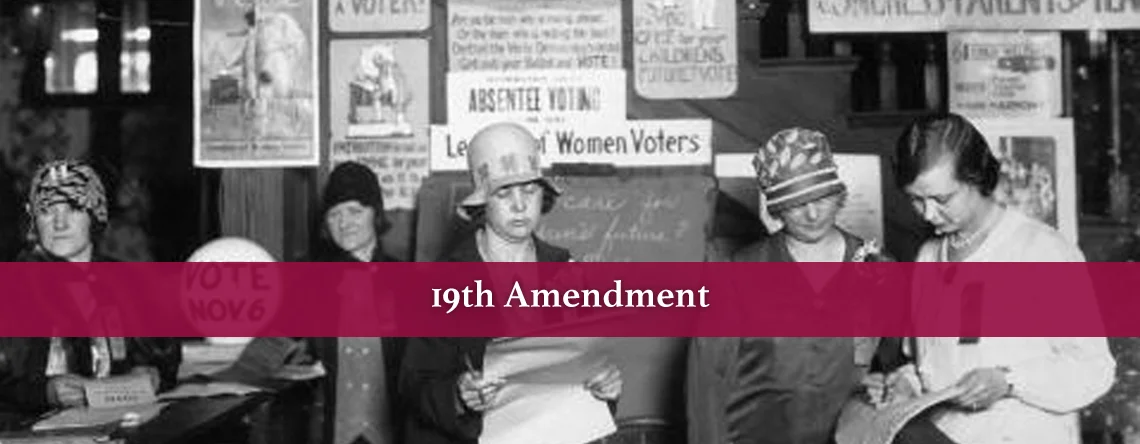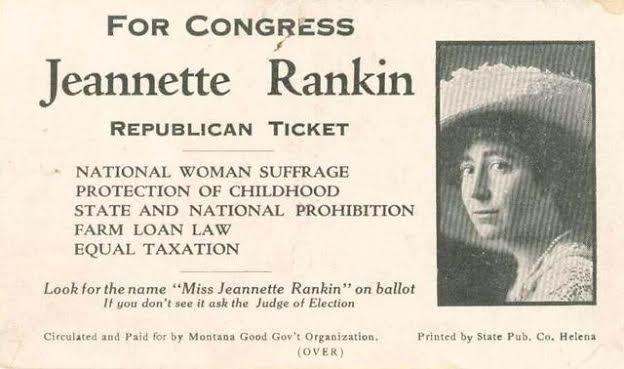The vote is the emblem of your equality, women of America, the guarantee of your liberty.
Carrie Chapman Catt
Alice Paul sews a star onto the NWP Ratification Flag, representing another state's ratification of the 19th Amendment, Library of Congress.
Passing the 19th Amendment
As the United States entered World War I in 1917, the National American Woman Suffrage Association (NAWSA) encouraged its supporters to join in the war effort. The organization argued women deserved the vote because they were patriots, caregivers, and mothers. Women’s expertise in maintaining the home and family would improve politics and society.
The combination of NAWSA’s war efforts and the publicity attracted by National Woman’s Party’s (NWP) pickets of the White House led to widespread support for woman suffrage. Although President Woodrow Wilson previously had refused to endorse suffrage, in September 1918 he addressed the Senate in favor of votes for women. He appealed to patriotic arguments for suffrage when he asked representatives, “We have made partners of the women in this war; shall we admit them only to a partnership of suffering and sacrifice and toil and not to a partnership of privilege and right?”
The Nineteenth Amendment states: “The right of citizens of the United States to vote shall not be denied or abridged by the United States or by any State on account of sex.” Congress passed the amendment in June 1919. The NAWSA and NWP suffragists lobbied local and state representatives to ensure its subsequent ratification by the states.
After the ratification of the Nineteenth Amendment on August 18, 1920, female activists continued to use politics to reform society. NAWSA became the League of Women Voters. In 1923, the NWP proposed the Equal Rights Amendment (ERA) to ban discrimination based on sex. The League of Women Voters and efforts to pass the ERA continue today.
By Allison Lange, Ph.D.
Fall 2015
Essential Questions
- How was the 19th Amendment passed?
- What happened as a result of its passage?
- How did the Amendment affect American women?
- What was the suffragists' response?
- What was the role of the League of Women Voters?
- What is the ERA? How was it an outcome of the suffrage movement?










On August 18th, 1920, the 19th Amendment to the United States Constitution was ratified. It granted all American women the right to vote. The article read, “The right of citizens of the United States to vote shall not be denied or abridged by the United States or by any State on account of sex.”